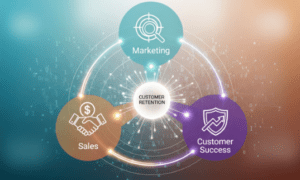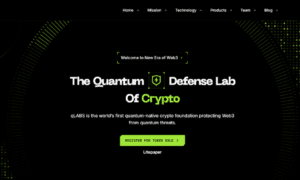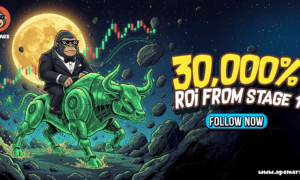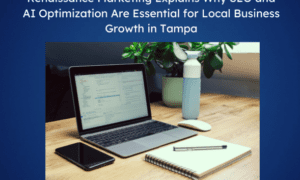Content marketing has evolved from a supplementary tactic to a core pillar of customer acquisition in the modern digital marketplace. High-quality, expert-authored content placed on authoritative platforms significantly enhances brand trust, drives traffic, and fosters client engagement. Through 2025, content marketing remains one of the most effective strategies, with nearly 90% of businesses either maintaining or increasing their budgets. Bylined articles, in particular, have emerged as essential in building credibility, authority, and long-term customer relationships.
Industry Overview and ROI
Content marketing delivers measurable results across the customer journey. Companies employing strategic content generation report up to 165% more leads than those who don’t. Research indicates that readers are 64% more likely to trust a brand offering educational content, and over 60% of B2B decision-makers value insights from thought leaders. Notably, bylined articles add an extra layer of trust and authority, which search engines also reward. Google’s evolving algorithm increasingly prioritizes content with strong E-E-A-T signals (Experience, Expertise, Authoritativeness, and Trustworthiness).
Budgets reflect this growing significance. The global content marketing industry is projected to reach nearly $2 trillion by 2032. Video content and expert-led thought leadership continue to dominate in engagement, though long-form articles remain influential, especially when supported by author credentials. AI tools have made content production faster, but human oversight and authenticity remain critical for audience trust.
Strategic Framework for Implementation
To leverage content marketing effectively, businesses must begin with a clear understanding of their target audience. Developing detailed buyer personas helps shape messaging and select the right platforms for distribution. SMART goals, specific, measurable, achievable, relevant, and time-bound, guide the process, whether the objective is lead generation, SEO enhancement, or brand awareness.
Once goals and audiences are defined, businesses should perform a content audit. This involves evaluating existing materials for gaps, repurposing high-performing pieces, and identifying opportunities for new content aligned with search intent. Keyword research is crucial in ensuring content is discoverable. By matching high-intent search queries with targeted topics, brands increase their chances of reaching decision-makers.
The editorial planning stage involves creating a balanced mix of evergreen and timely content. While trending topics can capture short-term attention, evergreen content sustains value and search relevance over time. Content types should range from how-to guides and op-eds to in-depth analyses and case studies. Personalization and storytelling, especially through author narratives and client success stories, significantly boost engagement.
High-authority bylined content demands credibility. Writers must showcase their expertise clearly, citing verifiable data and integrating firsthand experiences. An effective byline includes the author’s credentials and a concise biography, linking to professional profiles. Structuring content for readability, with clear headings, short paragraphs, and supporting visuals, enhances user experience and dwell time.

Distribution and Amplification
Securing placements on respected platforms such as Forbes, The Guardian, or niche industry publications significantly expands reach. Editors are more receptive to pitches that are tailored, data-backed, and audience-specific. Offering exclusivity and demonstrating promotional support can improve acceptance rates. Once published, content should be shared strategically across social media, newsletters, and sales enablement materials.
Amplification is crucial for maximizing content ROI. Social media promotions, especially on LinkedIn and X (formerly Twitter), help reach industry professionals. Paid campaigns can boost visibility among specific demographics. Syndicating content through email campaigns or converting it into other formats, like infographics or short-form videos, ensures it reaches varied audience segments.
Measuring Success and Optimization
Performance metrics should align with campaign goals. Key indicators include website traffic, time on page, social shares, backlinks, and conversion rates. Tools like Google Analytics, HubSpot, and SEMrush provide insights into how content performs and where improvements are needed. Periodic reviews help determine which topics and formats resonate most with the audience.
Successful content marketing is iterative. Feedback loops, both quantitative and qualitative, inform ongoing adjustments. Refreshing outdated posts, re-promoting top performers, and exploring new angles based on search trends ensure content remains relevant and effective.
Scalability and Future Outlook
As the landscape evolves, scalability becomes essential. Companies should cultivate internal expertise by training staff to create thought leadership content or collaborating with experienced writers. Standardized editorial workflows and AI-assisted tools can improve efficiency, but human authenticity must remain at the forefront.
Content marketing is expected to grow exponentially in sophistication and influence. As search engines and consumers demand more trustworthy content, the value of human-authored, bylined articles on high-authority platforms will only increase. Businesses that invest in strategic, credible, and well-distributed content will be better positioned to attract and retain clients in the years ahead.
Conclusion
Bylined content marketing is not merely a promotional tool, it is a strategic asset. Through clear goal-setting, audience alignment, authoritative content creation, and robust distribution, businesses can build long-term relationships with clients. The most successful brands will be those that consistently deliver value, authenticity, and expertise through their content.



































